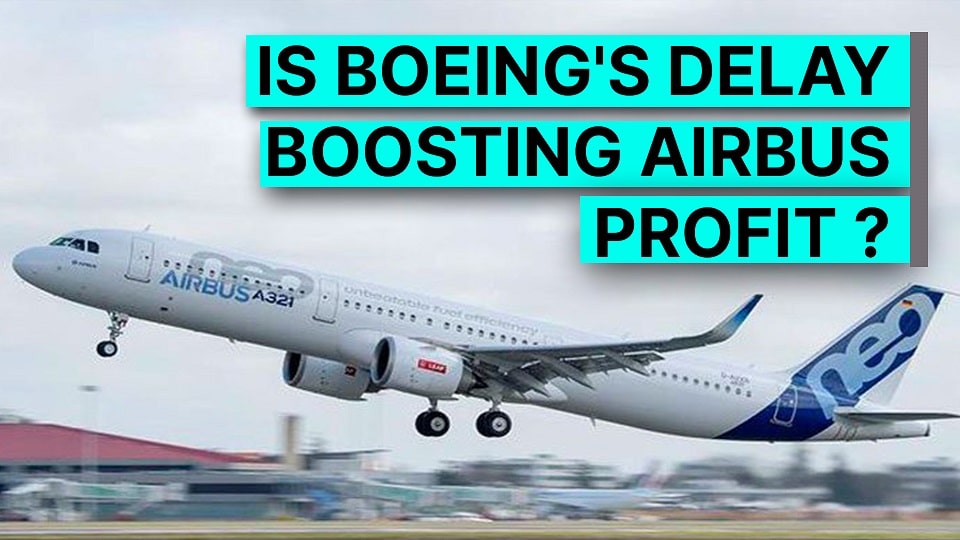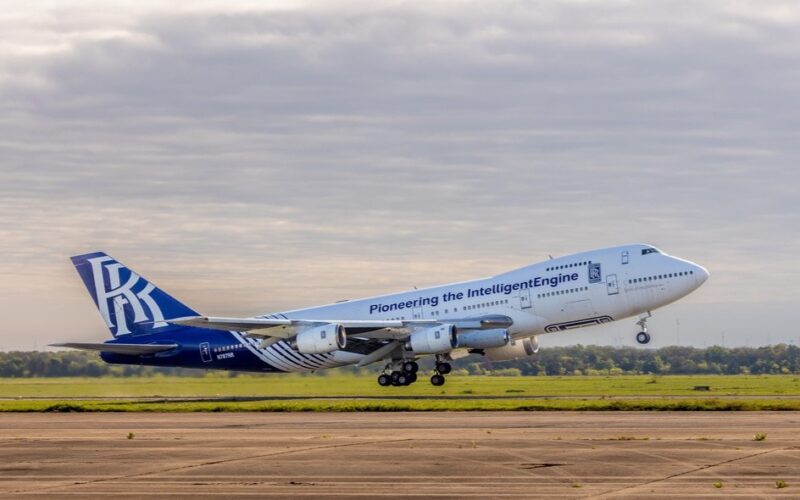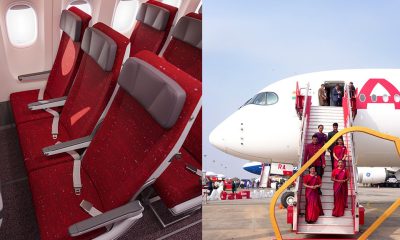Aerospace
Airbus A321 Neo is attracting more interest than the Boeing 737-10 Max.

In the narrow-body aircraft industry, Airbus is gaining traction. Delta recently acquired its first A321 neo aircraft and displayed its impressive features and cabin décor. However, the Boeing 737 Max 10 is on hold, which may delay the launch of the 737-10 Max until 2023. The Airbus A321neo may face competition from this aircraft.
Let’s have a look. The A321 Neo has a seating capacity of 194 passengers and is more fuel efficient than the current A321 aircraft. Delta has placed an order for 155 A321 aircraft, which will be delivered by 2027. Its domestic first-class seats have been updated to include memory foam cushioning, wings chairs for privacy, and a clever new design.
The Airbus A320neo family competes with the Boeing 737 MAX, It has more fuel-efficient CFM International LEAP-1B engines, aerodynamic alterations, including the 737’s signature split-tip winglets, and airframe upgrades, and Both aircraft is featured with latest generation avionics.
Boeing was attempting to clear the remaining inventory of 335 MAX aircraft in late January 2022, with the majority of them expected to be delivered by the end of 2023. The 737 MAX has 4,122 unfilled orders and 768 deliveries as of April 2022.
A total of 2,451 A321 airliners have been delivered as of December 2021, with 2,404 in operation. In addition, 3,419 aircraft have been placed on firm order (comprising 7 A321ceo and 3,412 A321neo). With 262 planes in its fleet, American Airlines is the largest operator of the Airbus A321.
Let’s look at the differences between the two aircraft.
- Airbus has a single-class seating capacity of up to 240 passengers, whereas the Boeing Max 10 has 230 seats.
- The A321 Neo has a cargo capacity of 1,826 cubic feet, which is somewhat less than the Boeing 737 Max’s 1,961 cubic feet.
- Both aircraft have nearly identical lengths, up to 44.51 metres for the Airbus and 43.8 metres for the 7 3 7 Max.
- The maximum take-off weight of the A321 Neo is 97 tonnes, while the Boeing 737 Max 10 is 89.7 tonnes.
- The A321 Neo has a fuel capacity of 32,940 litters, while the Boeing 737 Max has a capacity of 25,816 litters.
- Both aircraft can fly CFM and P&W engines, however the Airbus is equipped with the LEAP1A, which delivers 147.3 kN of thrust.
- On the other hand, the LEAP 1b Engine from Boeing delivers up to 130 kilo Newtons of thrust.
- Due to extra fuel capacity, the A321 has a range of roughly 7,410 km, while the Boeing 737 Max 10 has a range of 6,110 km.
- The A321 has a top speed of 876 km/h, while the Boeing 737 max has a top speed of 839 km/h.
- The A321 Neo costs $130 million, while the Boeing 737 Max 10 costs $134 million.
What is a Boeing P-8 airplane used for?
An aircraft’s suitability for passenger travel is determined by the Federal Aviation Administration (FAA). If Boeing misses the deadline, the MAX 10 will be unable to be authorized unless it can persuade Congress to extend a one-time exception from a safety standard provided to 737 line members. Boeing has 673 MAX 10 aircraft on order from 12 airlines, so any delays might be costly to both the firm and the airlines.
How has Boeing’s B787 dreamliner turned into a nightmare?
Airbus is providing much more than benefits to its customers, attracting a large number of orders from major airlines. On the other hand, Boeing must work hard to complete the certification process and release the Boeing 737 Max 10 as soon as possible in order to maintain market share in the narrow body aircraft segment.
What are your thoughts on both aircraft? Will Boeing return to compete with the A321 Neo aircraft? Please share your thoughts in the comments area.
China’s first C919 passenger jet completes its first flight, Before delivery.

Aerospace
China Secures Production Certificate for Mass Production of Pilotless eVTOL Aircraft

The first passenger-carrying pilotless electric vertical takeoff and landing (eVTOL) aircraft in the world, the EH216-S, has received the Production Certificate for its eVTOL aircraft from the Civil Aviation Administration of China (CAAC).
This is a significant milestone for EHang Holdings Limited, the leading UAM technology platform company in the world. This outstanding accomplishment is another big step towards mass manufacturing for the eVTOL aircraft and the ensuing commercial operations, building on the ground-breaking acquisition of the Type Certificate and the Standard Airworthiness Certificate for the EH216-S.
The PC is a crucial certificate that the aircraft maker receives from the CAAC, the country’s aviation authority. By obtaining this certificate, EHang has demonstrated that it has set up a quality management system for mass production that satisfies the airworthiness regulation standards set forth by the CAAC, and the company has been given permission to continue producing mass quantities.
It is also a strong guarantee of the calibre of the goods made by EHang. Raw materials, supplier management, manufacturing organisation, production quality control, aircraft pre-delivery test, after-sales repair and maintenance, etc. are all included in the mass production quality management system for the EH216-S.
To ensure that every aircraft and its components that roll off the production line strictly adhere to the approved type design and safety requirements, the system sets clear guidelines and documentation for every step in the production procedure. This ensures comprehensive traceability and safety control.
Aerospace
Four Airbus A380 Superjumbos lined up to be scrapped

In a strategic move aimed at reclaiming valuable resources from the iconic Airbus A380 aircraft, VAS Aero Services and Dr. Peters Group have announced a significant collaboration.
This partnership marks a milestone in aviation logistics and aftermarket services, with four of these colossal planes slated for teardown and redistribution of used serviceable material (USM).
The venture between VAS Aero Services, renowned for its expertise in aircraft dismantlement, and Dr. Peters Group, a prominent Germany-based investment fund management firm, underscores a commitment to sustainable aviation practices. This isn’t their first foray into scrapping A380s; their successful partnership has already seen the dismantlement of these aircraft, making them pioneers in this niche.
Under the agreement, the latest consignment brings the tally to eight A380s entrusted to VAS by Dr. Peters Group. Managing Director Christian Mailly of Dr. Peters Group emphasized the trust placed in VAS, citing their unparalleled capabilities in dismantlement and aftermarket sales network. It’s a strategic move in response to the growing demand for quality USM parts, particularly with the resurgence in reliance on the A380.
Notably, the teardown process will be carried out at various locations, optimizing the positioning of harvested parts to cater to different markets. While some parts will be positioned in Europe to support operators in the region and the Middle East, others will remain in the Asia-Pacific region. This meticulous strategy ensures efficient access to spare parts, benefiting MROs and airlines across these markets.
The decision to retire these A380s comes at a time when operators are reassessing fleet strategies amidst evolving market dynamics. Despite initial plans for quick retirement due to the emergence of more fuel-efficient alternatives, factors such as a rebound in long-haul demand and delays in new widebody deliveries have prompted operators to reconsider. The A380, with its unique capacity and capabilities, presents a practical solution for short-term capacity management.
Aerospace
Rolls-Royce Launches Test Flights for Revolutionary Pearl 10X Engine

Rolls-Royce reports that the company’s dedicated Boeing 747 flying testbed has seen the successful start of the Pearl 10X, their newest aero engine designed for the business aviation industry.
Dassault, a French aircraft manufacturer, has decided to use this engine only to power their newest flagship, the Falcon 10X. As stated at last year’s Capital Markets Day, the commencement of flight testing represents a significant milestone for both Rolls-Royce and the Pearl 10X programme as the company concentrates on expanding in the business aviation industry.
The first Rolls-Royce engine to power a Dassault business jet is the Pearl 10X, the newest engine in the state-of-the-art Pearl engine family. The Pearl 10X was chosen by the French aircraft manufacturer as their new flagship model, demonstrating even more of Rolls-Royce’s dominance in the business aviation engine market.
Over the next few months, pilots and flight test engineers from Tucson, Arizona, USA, will put the engine through its paces. The flight test programme will comprise testing of the nacelle’s anti-icing system, in-flight relights, engine performance and handling checks at various speeds and altitudes, and fan vibration tests at various altitudes.
The new auxiliary gearbox, which enables higher additional power extraction, and the ultra-low emissions ALM combustor, which is compatible with 100% Sustainable Aviation Fuel (SAF), have undergone extensive testing as part of the ground-based development programme thus far. The engine will be the most potent business aviation engine in the Rolls-Royce lineup. It exceeded its intended thrust levels during the very first test run. With over 2,300 testing hours successfully completed on the Pearl 10X engine configuration as well as the Advance 2 demonstration, the programme is moving forward at a rapid pace.
With the most economical engine core available for business aircraft, the Advance2 engine, coupled with a high-performance low-pressure system, gives the Pearl 10X an exceptional thrust of over 18,000 lbf. With a 5% increase in economy over the previous generation of Rolls-Royce commercial aviation engines, the Pearl 10X



























